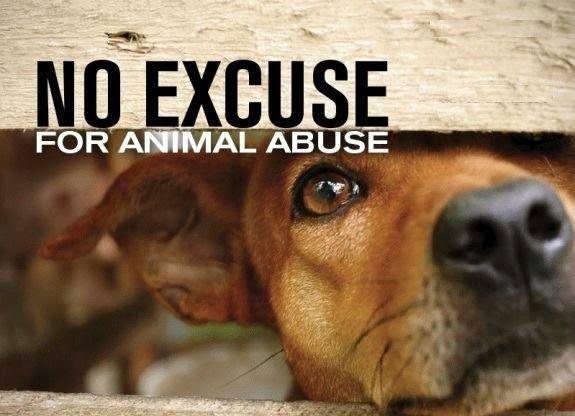When delving into the contentious issue of animal abuse, it becomes paramount to dissect the various facets that contribute to this pervasive societal malady. Animal abuse manifests in numerous forms, each with distinct motivations and consequences. Understanding the nuances of this topic not only cultivates empathy but also galvanizes action toward ameliorating the plight of affected animals.
To begin, one must comprehend the spectrum of animal abuse, which falls broadly into categories such as physical abuse, neglect, and psychological maltreatment. Physical abuse is perhaps the most conspicuous form, characterized by acts of violence inflicted upon animals. This can range from routine beatings to more heinous acts such as torture. Many perpetrators are driven by anger, frustration, or a misguided sense of control. Traditional views often associate this behavior with an absence of compassion; however, there lies a complex interplay of socio-economic factors and mental health issues that frequently contribute to this brutality.
Neglect, on the other hand, is often overlooked. It serves as a grim reminder that abuse doesn’t always entail deliberate violence. Rather, neglect encompasses failure to provide adequate care—food, water, shelter, and medical attention. The insidious nature of neglect is starkly evident in hoarding situations, where individuals amass large numbers of animals under deplorable living conditions. Often, these individuals may view themselves as saviors, albeit misguided, leading to a tragic deterioration of the animals’ health and well-being. The plight of these animals serves as a poignant illustration of how ignorance and misplaced altruism can culminate in severe suffering.
Another critical facet of the conversation surrounding animal abuse is the psychological dimension. Animals are sentient beings capable of experiencing a range of emotions, including fear, anxiety, and distress. Psychological abuse can manifest through repeated intimidation, isolation, and deprivation of social interaction. The long-term repercussions on the mental health of these animals can be equally devastating as physical injuries. They may exhibit behavioral issues or develop severe anxiety disorders, inhibiting their ability to trust humans and interact normally with their surroundings.
Moreover, cultural perceptions and societal norms play a significant role in shaping attitudes towards animal welfare. In some cultures, practices deemed normal may contradict widely accepted ethical standards in others. For instance, certain regions condone the use of animals for entertainment, whether in circuses or dog fighting. Such activities, entrenched in tradition, often escape scrutiny from those immersed in the culture, highlighting a crucial disconnect between ethical considerations and conventional practices. The challenge lies in fostering dialogue that respects cultural differences while advocating for universal standards of humane treatment.
Legislation is another critical tool in combating animal abuse. Over the years, many countries have implemented laws aimed at protecting animals from cruelty. These laws vary widely in their scope and enforcement mechanisms. Some regions boast robust animal welfare statutes, complete with stringent penalties for violations. Others, however, lack any legal framework to address these issues, leading to rampant cruelty without consequence. Advocacy efforts must strive toward harmonizing legal standards globally, emphasizing the fundamental right of all creatures to live free from suffering.
Public awareness is paramount in the fight against animal abuse. Initiatives aimed at educating the public about animal rights, humane treatment, and the signs of abuse can be transformative. Grassroots campaigns harnessing social media can amplify these messages, reaching broader audiences and prompting societal change. Documentaries, articles, and community outreach programs serve as crucial mechanisms for disseminating information, generally provoking emotional responses that can lead to tangible actions. Individuals can play a pivotal role in this movement, whether through volunteer work, donations, or simply becoming informed citizens.
It is imperative to recognize the interconnectedness of animal abuse with broader societal issues. The phenomenon of animal cruelty is often entwined with violence against humans, as multiple studies show a correlation between animal abuse and domestic violence, child abuse, and other forms of interpersonal violence. Addressing animal cruelty, therefore, is not merely an issue of animal rights but rather a crucial intersection in the fight against violence as a whole. By fostering compassion for animals, society may inadvertently cultivate a more humane environment for all living beings.
Certainly, combating animal abuse necessitates a collaborative approach involving individual actions, community engagement, and institutional commitment. Shelters and rescue organizations play an indispensable role in rehabilitating abused animals and advocating for policy changes. Their frontline work not only provides immediate relief but also fosters long-term solutions through education and legislative advocacy. Such organizations often rely on the goodwill of the public, showcasing how collective compassion can effect meaningful change.
In conclusion, the discussion around animal abuse is multifaceted and profound, encapsulating elements of legal, ethical, societal, and psychological dimensions. Understanding the complexity of this issue allows individuals to forge deeper connections with the cause. As animal advocates, it is essential to cultivate awareness, challenge societal norms, and push for progressive reforms. In doing so, we strive not only to protect our voiceless companions but also to reflect our moral values as a society committed to compassion and justice for all beings.










